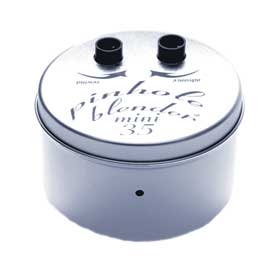
I don't want to bump down my post about the biopunk anthology, but I found this piece on the mesh between art, technology, and culture way too interesting not to share.
I ran into an article while web-browsing on a rabbit named Alba, the "GFP" bunny. Alba is living, breathing work of art whose fluffy flourescence ignited global controversy in the year 2000. Now, I'm sure I'm very behind the curb on this, but I was rather too young when the events first occured to take an interest in such things. So, for people like me, or others who just never caught wind, I'm going to go over the concept in brief. GFP is an acronym which stands for green flourescent protein, a gene which allows the jellyfish Aequorea Victoria to glow. This same protein has been injected into primates by researchers before in order to more easily detect viruses. Transgenic artist Eduardo Kac, however, took the idea to untried heights when he created a rabbit with this same gene.
Alba is an albino rabbit. She does not glow all the time, in the dark, or even on command. "When (and only when) illuminated with blue light (maximum excitation at 488 nm), she glows with a bright green light (maximum emission at 509 nm)." (from http://www.ekac.org/gfpbunny.html#gfpbunnyanchor)
Chicago Magazine reported in 2000, "GFP Bunny was due to appear in June at an arts festival in Avignon, France, where Kac planned to put Alba on exhibition in the city's cultural center. There, he had transformed an exhibition space into a cozy living room, including a couch, where he would live with Alba for a week. By doing so, he hoped to convey the idea that biotechnologies are on their way to entering our lives at the most basic level: in our private homes. Shortly before the exhibition date, though, the head of the institute where Alba had been engineered refused to let the rabbit leave, perhaps fearing the public protest and the scrutiny of genetic engineering that such a show would ignite.
'Many molecular biologists do their work in private and pretend it does not have social impact, yet the technologies they develop -- such as genetic engineering -- will eventually enter the entire society,' says Kac. 'By denying Alba presence in the exhibit, the institute director is trying to keep everything in the lab under wraps and impede debate.'"
Alba the glowing rabbit now lives with Kac, his wife Ruth and daughter Miriam in their Chicago home.






